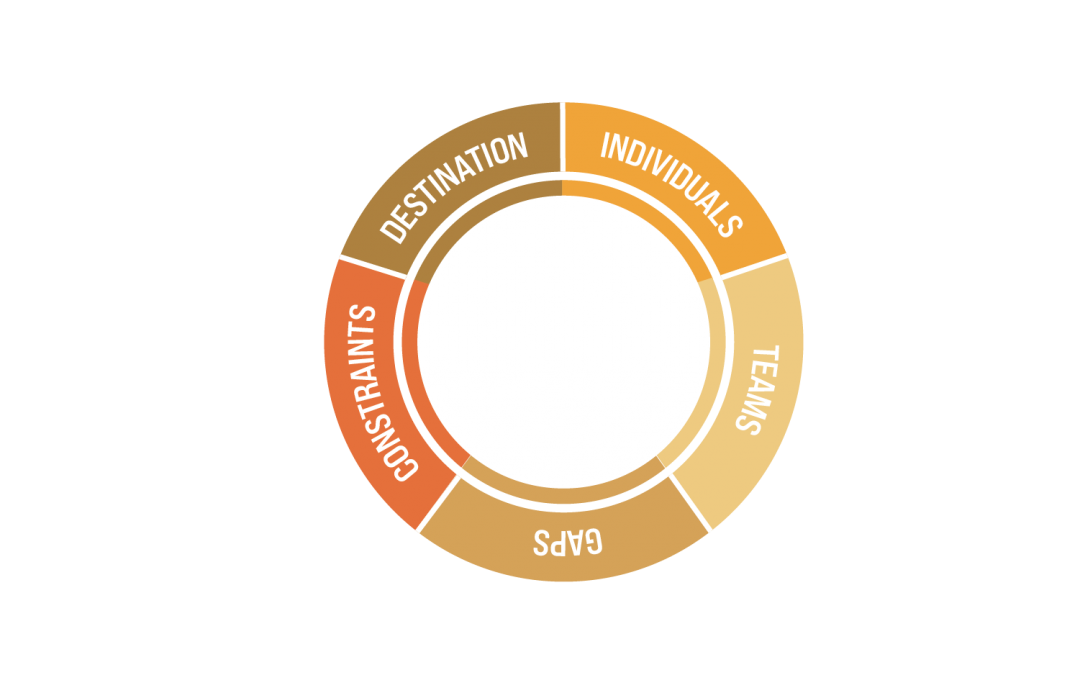When I first fell in love with airplanes, I would literally stand at the airport fence, watch what was occurring on the other side, and dream about flying. I was enthralled by the magic of flight. I did not study or have an in-depth understanding of the variables that enabled an airplane to fly. I didn’t need to. I simply loved and enjoyed the fact that they could.
When I decided to get on the other side of the fence and pursue flight training, that changed. It was important that I understood the whys and hows of flight so that I could both be an effective pilot and always keep the airplane flying.
It’s the same with organizational teamwork. When you become a leader, it is important that you understand the factors that affect organizational teamwork—the variables that impact how teams work together across the organization.
The variables are:
- The Destination: the specific, measurable goal of the organization; the future to which the organization is navigating. Does your organization / department / team have a clear destination?
- The Individuals: the individual leaders, managers, and team members that make the individual decisions and exhibit the individual behaviors that ultimately determine how teams will work together. Are the individuals in your organization healthy and passionate, or burned out and apathetic?
- The Teams: the individual teams, both traditional and non-traditional, where most work gets done today. Are your teams strong and cohesive, or just a group of people that happen to work together?
- The Gaps: the gaps between the teams, departments, and divisions where information-sharing and working together must take place. Does information sharing and working together take place in the gaps between your groups?
- The Constraints: the five organizational constraints that naturally hinder the ability of teams to work together. Is your organization unintentionally constraining the ability of teams to work with each other across the organization?
If your teams are not working together across boundaries, the reason will most likely be one or more of these variables. For example, you may have a strong culture of teamwork, but if those teams do not have a clear, collective picture of where the organization is heading, they will have difficulty working together.
Of course, what unlocks the potential of each of the variables is not just understanding them but taking transformative action, which I’ll cover in a future blog post. For now, use the above variables and questions to conduct a quick diagnostic of your own organization.

